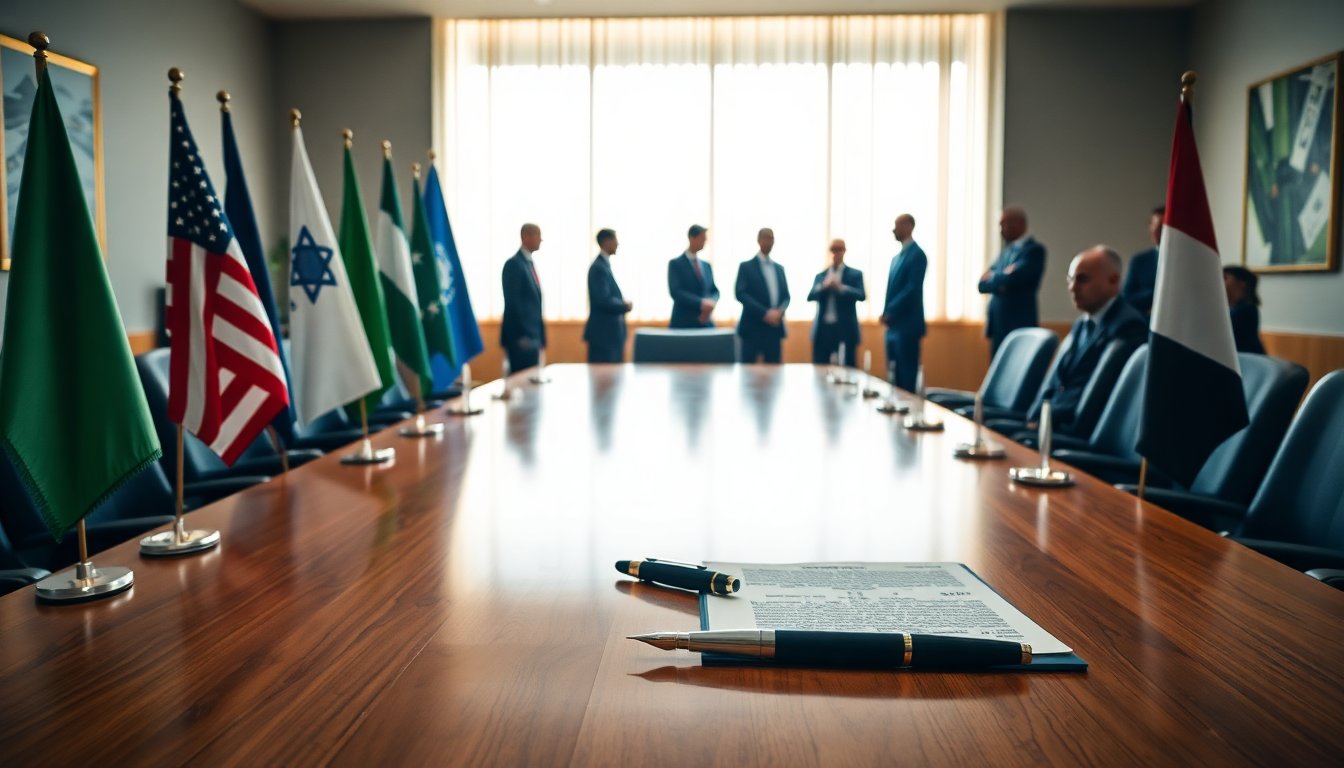Table of Contents
In a pivotal moment for Middle Eastern politics, the U.N. Security Council has endorsed President Trump’s 20-point peace plan for Gaza. This decision follows extensive negotiations and underscores the international community’s commitment to fostering peace and stability in a region plagued by conflict. The resolution aims to establish a framework for rebuilding Gaza after two years of devastating warfare, which resulted in substantial casualties and destruction.
The approved resolution supports a ceasefire and proposes the creation of an international stabilization force to oversee security operations in Gaza. This initiative is part of a broader vision that includes a transitional governance structure led by Trump, with the goal of eventually paving the way for an independent Palestinian state.
Key components of the peace plan
Central to the resolution is the establishment of a Board of Peace, which will provide transitional leadership and governance in Gaza. This board will have a broad mandate, tasked with overseeing critical functions such as border security and the demilitarization of the area. Trump’s recent social media statement praised the resolution as a historic achievement, suggesting it could lead to lasting peace not only in Gaza but potentially worldwide.
International support and challenges
Support for the resolution was not unanimous; it faced opposition from various groups, particularly from Hamas, which criticized the plan for not adequately addressing the political and humanitarian rights of the Palestinian people. Despite this dissent, the resolution passed with a 13-0 vote, as both Russia and China abstained. The involvement of Arab nations was crucial, as they expressed a willingness to contribute troops to the proposed stabilization force, contingent upon U.N. authorization.
U.S. Ambassador to the U.N., Mike Waltz, emphasized that this resolution marks a significant step towards a stable Gaza, creating an environment conducive to Israeli security. Over two weeks of negotiations led to amendments that reflect Arab nations’ concerns, especially regarding Palestinian self-determination, even though the resolution does not establish a timeline for when this might occur.
Implementation and future prospects
Looking ahead, the stabilization force’s mandate will include ensuring the demilitarization of Gaza, a complex task that raises questions about how to effectively disarm Hamas. The resolution permits the use of military measures to enforce compliance with international law, which may complicate the neutrality of the force.
Coordination with regional players
As the international force begins to establish its presence, the resolution outlines a framework for the withdrawal of Israeli forces from Gaza. This withdrawal will be contingent upon agreed standards related to the demilitarization process, emphasizing the need for coordination among the stabilization force, Israeli military, U.S. representatives, and regional allies. The resolution also highlights the importance of collaborating with Egypt and Israel to facilitate humanitarian aid deliveries.
While the U.N. Security Council’s approval of Trump’s peace initiative for Gaza represents a hopeful turning point, significant challenges remain. The success of this plan hinges on the effective implementation of its provisions and the commitment of all parties involved to pursue a peaceful resolution to the ongoing conflict.


